Welcome to our informative article series on HVAC systems. In this first section, we will shed light on the most prevalent HVAC problem that homeowners frequently encounter. By understanding and identifying this common issue, you can take proactive measures to prevent it and ensure your HVAC system operates smoothly.
Key Takeaways:
- Understanding the most common HVAC problem helps you address it effectively.
- Recognizing warning signs can help you take timely action to prevent potential damage.
- Identifying the root causes empowers you to implement preventive measures.
- Applying expert tips and recommendations can prolong the life of your HVAC system.
- Troubleshooting steps may help you resolve the issue or determine when to seek professional assistance.
Understanding the Most Common HVAC Problem
When it comes to HVAC systems, one problem that homeowners frequently encounter is the common HVAC problem. In this section, we will explore the details of this prevalent issue, including the reasons behind its occurrence and the impact it can have on your HVAC system’s performance and efficiency.
To give you a visual representation, take a look at the table below which highlights the key aspects of the most common HVAC problem:
| Common HVAC Problem | Reasons | Impact |
|---|---|---|
| Decreased cooling or heating capacity | Dirty air filters, refrigerant leaks, faulty components | Uncomfortable indoor temperature, high energy consumption |
| Inefficient airflow | Obstructed ductwork, clogged air vents, malfunctioning blower motor | Poor air quality, reduced comfort, strain on the system |
| Uneven temperature distribution | Imbalanced airflow, thermostat issues, ductwork leaks | Hot and cold spots, discomfort, inconsistent performance |
Understanding the intricacies of the common HVAC problem is essential for effectively addressing and preventing it. By identifying the underlying causes and recognizing the impact it can have on your HVAC system, you can take proactive measures to ensure its optimal functioning.
Warning Signs of the Most Common HVAC Problem
Recognizing the warning signs of the most common HVAC problem is crucial in ensuring the efficient and reliable performance of your HVAC system. By addressing these issues promptly, you can prevent further damage or disruption to your home’s heating and cooling system. Here are the key warning signs to look out for:
- Inconsistent Temperature: If you notice significant variations in indoor temperatures from room to room or uneven heating and cooling, it could indicate an HVAC problem. Uneven airflow or inadequate insulation might be the cause.
- Strange Noises: Unusual sounds coming from your HVAC system, such as grinding, banging, or squealing, could indicate mechanical issues or loose components. These noises should not be ignored, as they may lead to more significant problems if left unaddressed.
- Increased Energy Bills: If you observe a sudden spike in your energy bills without any changes in usage habits, it could be a sign of an HVAC problem. Inefficient operation, compromised airflow, or a malfunctioning thermostat can lead to higher energy consumption.
- Weak Airflow: Poor airflow from the vents can indicate clogged filters, damaged ductwork, or a failing blower motor. Reduced airflow not only impacts comfort levels but also reduces overall system efficiency.
- Frequent Cycling: If your HVAC system cycles on and off more frequently than usual, it may indicate an underlying issue. This could be caused by a malfunctioning thermostat, improper system sizing, or a refrigerant leak.
By paying attention to these warning signs, you can address HVAC problems early on and avoid costly repairs or system replacements. If you observe any of these signs in your HVAC system, it is recommended to consult a professional HVAC technician for a thorough inspection and appropriate repairs.
| Warning Signs | Possible Causes |
|---|---|
| Inconsistent Temperature | Uneven airflow, inadequate insulation |
| Strange Noises | Mechanical issues, loose components |
| Increased Energy Bills | Inefficient operation, compromised airflow, malfunctioning thermostat |
| Weak Airflow | Clogged filters, damaged ductwork, failing blower motor |
| Frequent Cycling | Malfunctioning thermostat, improper system sizing, refrigerant leak |
Causes of the Most Common HVAC Problem
Understanding the root causes behind the most common HVAC problem is essential for ensuring the optimal functioning of your heating, ventilation, and air conditioning system. By identifying these causes, you can take proactive measures to prevent the issue from occurring and avoid unnecessary disruptions.
1. Lack of Regular Maintenance
One of the primary causes of the common HVAC problem is a lack of regular maintenance. Over time, dust, dirt, and debris can accumulate in your system’s filters and ducts, restricting airflow and reducing its efficiency. Regular maintenance, such as filter replacements and professional cleanings, can help prevent this issue and keep your HVAC system operating smoothly.
2. Dirty or Clogged Condenser Coils
Your HVAC system’s condenser coils, located outside your home, play a crucial role in releasing heat. However, these coils can become dirty or clogged with debris, hindering their ability to transfer heat effectively. This can lead to inefficient cooling or heating and put strain on the entire system. Regular cleaning and maintenance of the condenser coils can prevent this common HVAC problem.
3. Refrigerant Leaks
Refrigerant is a vital component of your HVAC system, responsible for cooling the air in your home. However, refrigerant leaks can occur due to age, wear and tear, or improper installations. When refrigerant levels are low, your HVAC system may struggle to cool your home efficiently. Detecting and repairing refrigerant leaks promptly can help avoid this common HVAC problem and ensure optimal cooling performance.
4. Electrical Issues
Electrical issues, such as faulty wiring or malfunctioning components, can also contribute to common HVAC problems. These issues can disrupt the proper functioning of your HVAC system, affecting its performance and even posing safety risks. Regular inspections and maintenance by qualified professionals can help identify and address any electrical issues before they escalate and result in HVAC problems.
5. Improper Sizing or Installation
Improper HVAC system sizing or installation can lead to a host of problems, including inadequate cooling or heating, energy inefficiency, and premature system failures. It’s important to ensure that your HVAC system is correctly sized for your home and installed by knowledgeable professionals. This ensures optimal performance and minimizes the chances of encountering common HVAC problems.
By understanding these causes of the most common HVAC problem, you can take proactive steps to prevent and address these issues. Regular maintenance, proper cleaning, prompt repairs, and professional installations are essential for maintaining the efficiency and longevity of your HVAC system.
Preventing the Most Common HVAC Problem
To avoid the frustration and inconvenience of facing the most common HVAC problem, taking proactive measures is essential. By following these expert tips and recommendations, you can prevent this issue from arising and ensure the longevity and optimal performance of your HVAC system:
- Schedule Regular Maintenance: Arrange for professional HVAC maintenance at least once a year. A trained technician will inspect and service your system, identifying any potential problems and addressing them before they escalate.
- Change Air Filters: Regularly replace your HVAC system’s air filters, generally every three months or as recommended by the manufacturer. Clean filters promote better air quality, prevent clogs, and keep your system running efficiently.
- Keep Vents Clean and Clear: Ensure that all vents and registers in your home are free from obstructions, such as furniture, rugs, or curtains. This allows for proper airflow and prevents strain on your HVAC system.
- Manage Indoor Humidity: Maintain appropriate humidity levels in your home by using a dehumidifier or humidifier as needed. Excess humidity can lead to moisture-related issues within your HVAC system, such as mold growth.
- Install Programmable Thermostats: Upgrade to a programmable thermostat to efficiently regulate the temperature in your home. Set temperature schedules based on your daily routines to avoid unnecessary strain on your HVAC system.
- Seal Leaks and Insulate: Inspect your home for air leaks around windows, doors, and ductwork. Seal any gaps and properly insulate your home to prevent drafts and energy loss, reducing the workload on your HVAC system.
- Avoid Overworking the System: Be mindful of how you use your HVAC system. Avoid setting temperatures excessively high or low, especially when you’re not at home. Minimize the strain on your system by keeping it within a reasonable range.
By implementing these prevention tips, you can significantly reduce the chances of encountering the most common HVAC problem. Taking a proactive approach will not only save you from potential headaches but also extend the lifespan of your HVAC system while improving its overall efficiency and performance.
Troubleshooting the Most Common HVAC Problem
If you find yourself experiencing the most common HVAC problem, don’t worry. Here, we will guide you through the troubleshooting steps to identify and address the issue. By following these instructions, you can potentially resolve the problem on your own or determine if professional assistance is necessary.
Step 1: Check the Thermostat Settings
Start by verifying the thermostat settings. Ensure that it is set to the appropriate temperature and mode (cooling or heating). Sometimes, incorrect settings can lead to HVAC malfunctions.
Step 2: Inspect the Air Filter
An often overlooked but crucial step is checking the air filter. A clogged or dirty filter restricts airflow, causing your HVAC system to work harder and potentially leading to issues. If the filter is dirty, replace it with a new one.
Step 3: Verify the Power Supply
Make sure that the HVAC system is receiving power. Check the circuit breaker or fuse and reset or replace them if necessary. Additionally, examine the power switch on the HVAC unit itself, ensuring it is in the correct position.
Step 4: Inspect the Outdoor Unit
Head outside and examine the outdoor unit. Clear any debris, leaves, or obstructions that may be restricting airflow. Ensure that the coils are clean and free from dirt or debris. A dirty outdoor unit can affect the HVAC system’s performance.
Step 5: Check for Strange Noises or Odors
Listen for any unusual noises coming from the HVAC system, such as rattling, grinding, or squealing. Unpleasant odors may also indicate an issue. If you notice anything unusual, it’s best to contact a professional HVAC technician to diagnose and resolve the problem.
Following these troubleshooting steps can help you identify and resolve the most common HVAC problem. Remember, if you encounter any difficulties or the issue persists, it’s always wise to seek professional assistance. Your HVAC system plays a vital role in keeping your home comfortable, so addressing any problems promptly is essential.
Conclusion
In conclusion, being aware of common HVAC problems and taking preventive measures is crucial for maintaining a well-functioning HVAC system. By following the tips provided in this article, you can minimize the chances of encountering these issues and ensure optimal performance and comfort in your home.
Regular maintenance is key to preventing HVAC problems. Schedule annual inspections with a certified technician to identify and address any potential issues before they escalate. Additionally, keep your HVAC system clean by regularly changing air filters and cleaning the vents to avoid airflow restrictions.
If you do encounter HVAC problems, troubleshooting can help resolve some issues on your own. However, it’s important to know your limits. If you are unsure or unable to resolve the problem, don’t hesitate to seek professional assistance. Prompt repairs by qualified technicians can prevent further damage and costly repairs down the line.
By staying proactive and informed about common HVAC problems, implementing preventive measures, and knowing when to seek professional help, you can ensure that your HVAC system operates efficiently and reliably year-round, providing you and your family with the comfort you deserve.
FAQ
What is the most common HVAC problem faced by homeowners?
The most common HVAC problem faced by homeowners is inadequate airflow. This can occur due to various reasons, such as clogged air filters, blocked vents, or issues with the ductwork.
Why is understanding the most common HVAC problem important?
Understanding the most common HVAC problem is important because it allows homeowners to be proactive in preventing it. By identifying the problem early on and addressing it promptly, you can avoid potential damage to your HVAC system and ensure its smooth operation.
What are the warning signs of the most common HVAC problem?
Some warning signs of the most common HVAC problem include uneven cooling or heating in different areas of your home, weak airflow from vents, unusual noises coming from the HVAC system, and increased energy bills without a corresponding change in usage.
What causes the most common HVAC problem?
The most common HVAC problem is often caused by factors such as dirty air filters, obstructed vents or registers, leaky ducts, or improper HVAC system sizing. These issues can lead to reduced airflow and hinder the system’s performance.
How can I prevent the most common HVAC problem?
To prevent the most common HVAC problem, it is crucial to regularly clean or replace air filters, keep vents and registers unobstructed, schedule professional maintenance for your HVAC system, and ensure proper insulation and sealing of ductwork.
What troubleshooting steps can I take for the most common HVAC problem?
If you encounter the most common HVAC problem, you can try troubleshooting steps such as checking and replacing clogged air filters, ensuring vents and registers are fully open, inspecting the ductwork for leaks or obstructions, and resetting the circuit breaker or thermostat if necessary. If the problem persists, it’s recommended to consult a professional HVAC technician.
Why is it important to prevent and troubleshoot the most common HVAC problem?
Preventing and troubleshooting the most common HVAC problem is important to maintain optimal system performance and efficiency. By addressing potential issues early on, you can avoid costly repairs, extend the lifespan of your HVAC system, and ensure a comfortable indoor environment.














